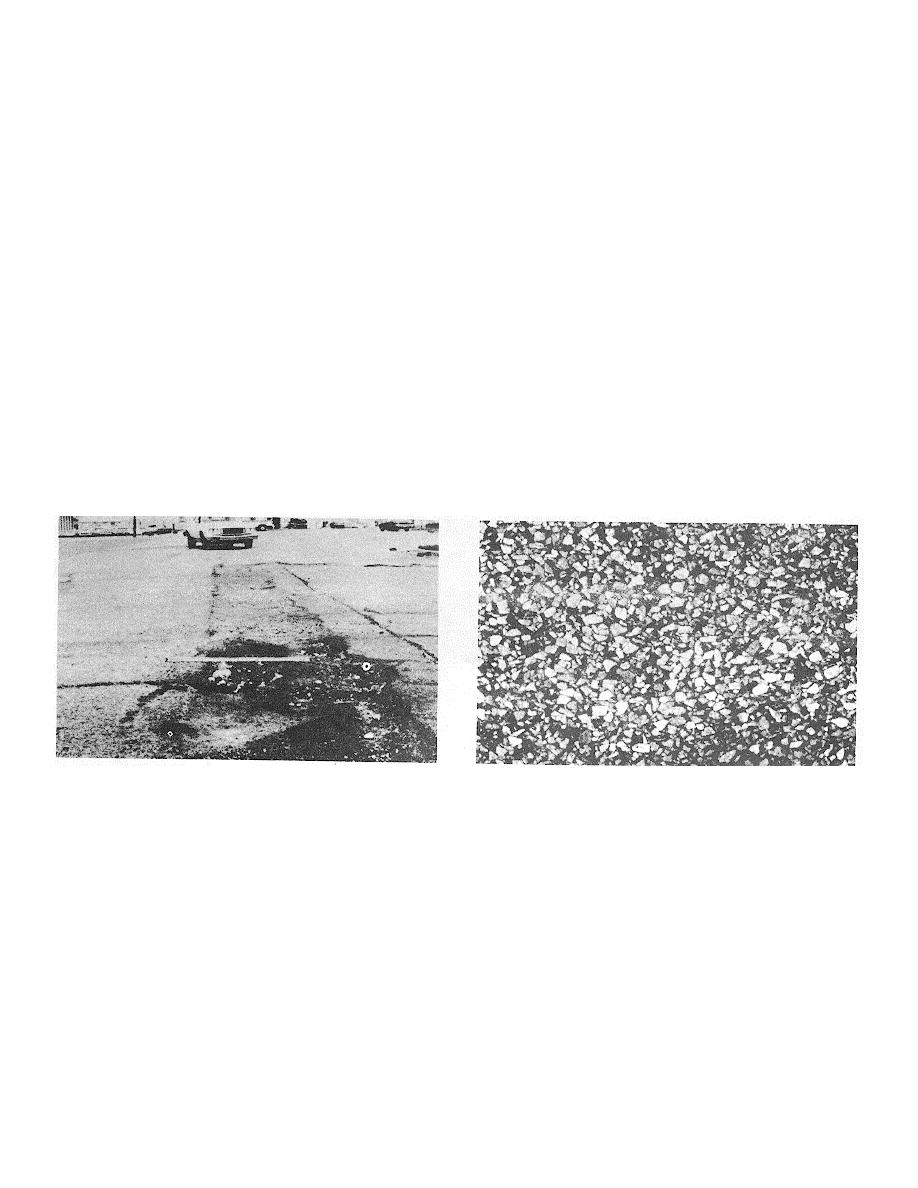
TM 5-623
H-Patch is badly deteriorated and/or ride quality is rated as high severity. Patch
needs replacement soon (fig B-46).
How to Measure:
Patching is rated in square feet of surface area. However, if a single patch has
areas of differing severity, these areas should be measured and recorded
separately. For example, a 25-square-foot patch may have 10 square feet of
medium severity and 15 square feet of low severity. These areas would be
recorded separately. No other distresses (e.g., shoving or cracking) are
recorded within a patch (e.g., even if patch material is shoving or cracking,
the area is rated only as a patch).
If a large amount of pavement has been replaced, it should not be recorded as a
patch, but considered as new pavement (e.g., replacement of full
intersection).
Name of Distress:
Polished Aggregate.
Description:
This distress is caused by repeated traffic applications. When the aggregate in
the surface becomes smooth to the touch, adhesion with vehicle tires is
considerably reduced. When the portion of aggregate extending above the
surface is small, the pavement texture does not significantly contribute to
reducing vehicle speed. Polished aggregate should be counted when close
examination reveals that the aggregate extending above the asphalt is
negligible, and the surface aggregate is smooth to the touch. This type of
distress is indicated when the number on a skid resistance test is low or has
dropped significantly from previous ratings.
Severity Levels:
No degrees of severity are defined. However, the degree of polishing should be
significant before it is included in the condition survey and rated as a defect
(fig B-47).
Figure B-46. High-severity patching and utility cut
Figure B-47. Polished aggregate.
patching.
How to Count:
Polished aggregate is measured in square feet of surface area. If bleeding is
counted, polished aggregate should not be counted.
Name of Distress:
Potholes.
Description:
Potholes are small (usually less than 3 feet in diameter), bowl-shaped
depressions in the pavement surface. They generally have sharp edges and
vertical sides near the top of the hole. Their growth is accelerated by free
moisture collection inside the hole. Potholes are produced when traffic
abrades small pieces of the pavement surface. The pavement then
continues to disintegrate because of poor surface mixtures, weak spots in the
base or subgrade, or because it has reached a condition of high-severity
alligator cracking. Potholes are generally structurally related distresses and
should not be confused with raveling and weathering. Thus, when holes are
created by high-severity alligator cracking, they should be identified as
potholes, not as weathering.
B-17



 Previous Page
Previous Page
